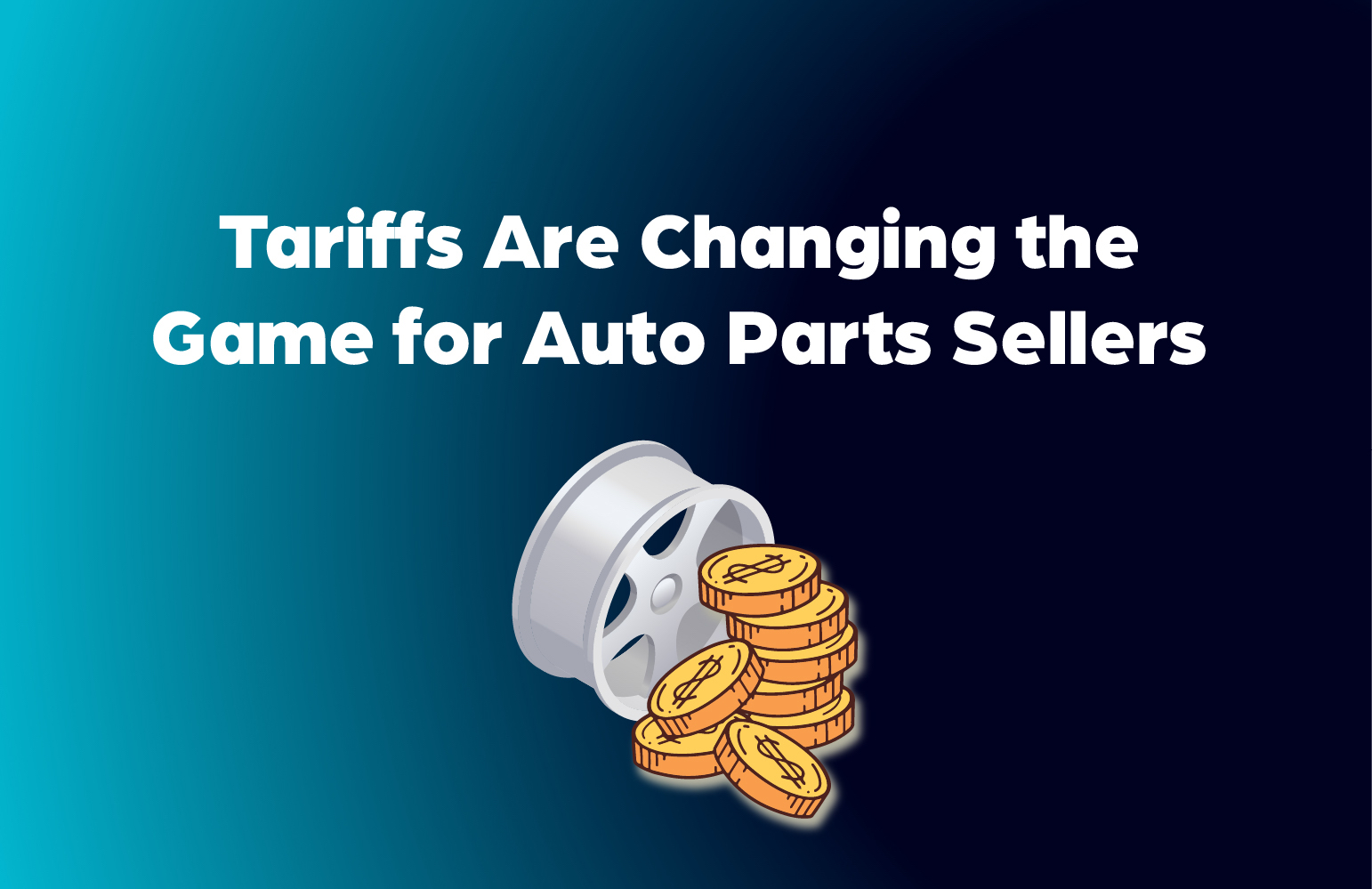Tariffs are back on the table — and auto parts sellers need to pay attention
There’s been a lot of talk lately about new import duties and rising trade barriers, especially around automotive parts. With proposals of significant tariffs on imported components and vehicles, sellers in the auto parts space are preparing for impact.
If you sell parts online, this shift doesn’t just affect your supply costs — it could reshape your entire strategy. From pricing to sourcing to customer expectations, the ripple effects are already in motion.
In this article, we’ll explore how rising tariffs are reshaping the auto parts ecommerce landscape — and what you can do to stay ahead.
1. Higher tariffs mean higher part prices
Let’s start with the obvious: if you rely on imported stock, a tariff increase means paying more for the same part.
This raises a key question:
Do you pass that cost to the buyer, or absorb it yourself?
For most auto parts stores — already running on thin margins — neither option is ideal.
But with the right strategy, you can reduce the damage. That starts by reviewing:
- Your highest-selling imports
- Pricing flexibility on those SKUs
- Whether local sourcing is a possibility
2. Repairs may become more common than replacements
Here’s one unexpected upside: as new cars get more expensive (partly due to tariffs), more people may hold onto their vehicles longer — and repair instead of replace.
That could mean a spike in demand for:
- High-wear components (brakes, filters, belts)
- Compatible aftermarket options
- Refurbished or second-hand parts
If your store is set up to serve these buyers, you might actually benefit from the shift.
3. It’s time to rethink your supply chain
If your business depends heavily on one or two international suppliers, now’s the time to diversify.
Smart sellers are already:
- Exploring partnerships with local or regional wholesalers
- Pre-ordering popular items before tariffs hit
- Identifying parts that can be stocked in bulk to reduce future cost shocks
You don’t have to overhaul everything — but even small adjustments to your sourcing strategy can protect your margins long-term.
4. When prices go up, service matters more
When customers see higher prices, they start asking more questions.
They want reassurance. They want details. And they definitely don’t want to be surprised after purchase.
This is where your store’s user experience matters.
Make sure you:
- List clear specs, OE numbers, and fitment details
- Show accurate stock and delivery estimates
- Offer solid customer support and returns
You may not be the cheapest — but you’ll be the most trusted.
5. Local sellers might gain a short-term edge
If you’re selling in Europe or the UK, you may face fewer direct price changes — but global supply chains are interconnected. Rising costs in one region affect logistics, manufacturing, and inventory everywhere else.
That said, this could be a chance to:
- Strengthen your market position while others adjust
- Offer faster delivery or more stable pricing
- Win over customers looking for reliable, close-to-home sellers
Even small advantages can go a long way during industry shifts.
6. Don’t forget about EV parts
As the EV market grows, sellers are starting to offer more parts for electric and hybrid vehicles.
But many EV components are imported — batteries, sensors, charging systems — and may be affected by the same tariffs.
If you’re in this space (or planning to enter), build your strategy now:
- Find out which parts are most vulnerable to tariff increases
- Adjust your sourcing accordingly
- Monitor how EV demand is shifting across regions
This area is evolving fast — the more proactive you are, the better positioned you’ll be.
Why this matters: Preparing early is your advantage
Tariffs are frustrating — but they’re also predictable. If you wait until they hit to react, you’re already behind.
Instead, think of this moment as a chance to:
- Review your supply chain
- Adjust your pricing
- Strengthen customer loyalty through better experience
- Look for gaps left by less-prepared sellers
The sellers who adapt early are the ones who stay profitable.
Final thoughts: Turn pressure into progress
Auto parts ecommerce is already complex — and trade changes don’t make it easier. But with the right mindset, this shift can be more than a problem. It can be an opportunity.
Now’s the time to:
- Audit your imports
- Stay close to your customers
- Make smarter decisions around sourcing and operations
The market is moving — and the most resilient stores will be the ones that move with it.
FAQs
Will this make ecommerce too expensive for small sellers?
Not necessarily. Small sellers can be more flexible and adjust faster — if they stay informed and focused on service.
Should I stock up now?
If you sell parts likely to be affected, pre-ordering key SKUs at current prices might be a smart move.
What if I don’t sell to the U.S.?
Even if your store is based in Europe or the UK, global changes in pricing and availability can still affect your business. It’s worth preparing.


